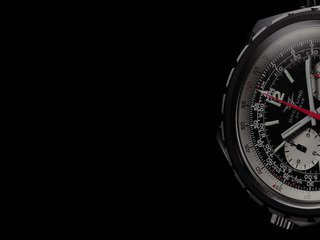
Chapter 4
INSTRUMENTS FOR PROFESSIONALS
The Chronomat makes the mechanical chronographs cool again
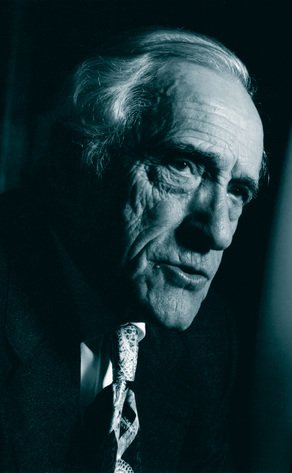
In the late 1970s, mechanical watchmakers faced the biggest challenge in their history: the “quartz crisis.” Quartz was exponentially more precise and reliable than mechanical watches, while being inexpensive to produce. So when precision ceased to be the defining factor in the quality of a timepiece, traditional watchmaking went into upheaval.
Willy Breitling’s health was rapidly deteriorating, yet he would not retire until he had secured a successor he could trust to resist merging with other brands to survive the crisis. At last, Willy found his man—someone he was convinced would uphold the brand’s independence and preserve its heritage.
Ernest Schneider, a technical and aviation enthusiast, took over Breitling in 1979 at the height of the quartz crisis. Schneider understood that he was the guardian of a unique legacy. For the brand to succeed, he would have to steer it down a path of specialization that no one else could replicate. That path was “instruments for professionals,” high-performance watches designed for functionality, reliability and durability, even in the toughest situations.
Schneider’s strategy would pay off. Breitling successfully weathered the crisis and, in 1984, was able to revive its hundred-year-old craft by introducing the famous Chronomat, a revolutionary timepiece that paved the way for the return of mechanical watches.
The brand was sold to Ernest Schneider. Schneider was an electronics engineer who specialized in transmissions within the Swiss armed forces. Previously he had directed the Sicura watch company, which flourished under his leadership and stood out for various technical advances, especially in the area of solar-celled and quartz watches. In his personal life, Schneider was an aviation enthusiast who had a pilot’s license and owned his own plane. As a watchmaker and aviator, Ernest Schneider had been a longtime admirer of Breitling. On April 5th, 1979, he signed the contract that gave him the reigns of the Breitling brand.
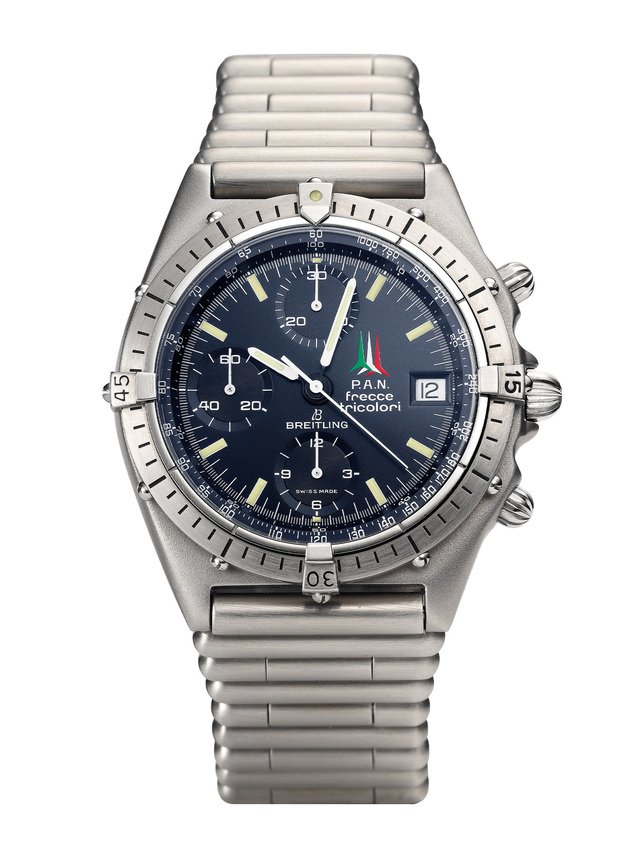
Schneider didn’t see quartz as the enemy. In fact, he recognized an opportunity in it. On the one side, quartz provided the kind of precision and reliability that true professionals demanded in their timepieces. On the other, the crisis has made mechanical watchmaking a niche industry that was now occupied by a much smaller pool of competitors. “Instruments for professionals” became the tagline for this new era at Breitling. While other brands were using quartz for its price, Breitling began using it as the basis for developing the most precise and reliable watches on the market. At the same time, the brand didn’t stop building mechanical watches. In fact, Breitling would go on to play a major role in securing their comeback.
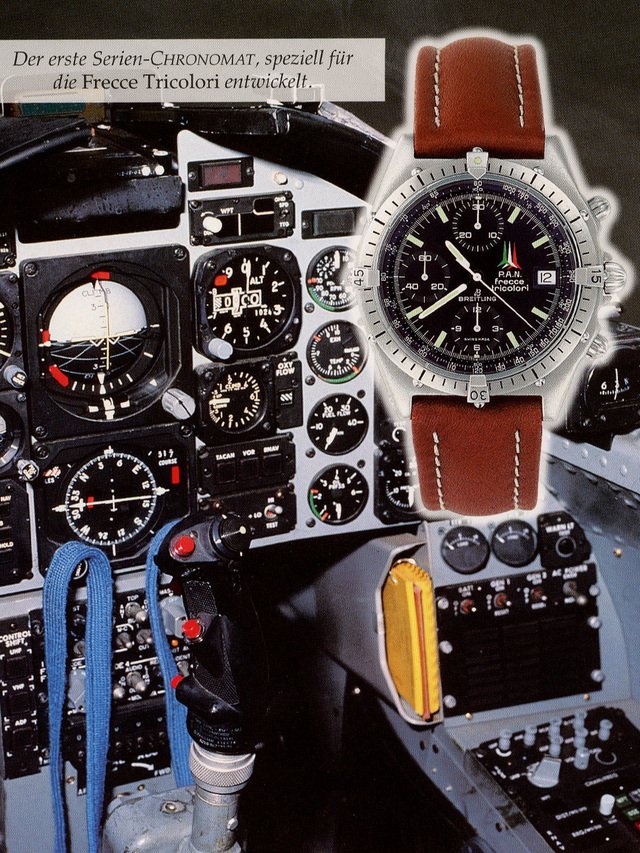
Schneider learned that one of the world’s most prestigious aerobatic teams, the Italian army’s Frecce Tricolori, was issuing an invitation to tender for its official watch. The elite aerobatics team favored an analog display, so their watch would have to be mechanical. Schneider saw this project as this perfect opportunity to reaffirm Breitling’s traditional watchmaking expertise while celebrating the brand’s ties to aviation.
In 1983, Breitling created the Chronograph “Frecce Tricolori” for the Italian jet team. It introduced key design elements like a rotating bezel with four rider tabs on the quarter hours, and a Rouleaux bracelet that later became a staple of the Chronomat.
Breitling marked its centennial by launching the Chronomat. This exceptional model triggered the renaissance of the mechanical chronograph on top of becoming a Breitling bestseller. Its design and, in particular its recognizable rider tabs, were inspired by the Chronograph “Frecce Tricolori” launched a year earlier.
It was a bold gamble that went against the quartz trend. The Chronomat’s commanding size was in sharp contrast to the extra-thin quartz watches popular at the time. But Breitling’s bet paid off. The watch quickly became a success, especially in Italy (a key market for fine watchmaking) and the United States, making the mechanical chronograph cool again.
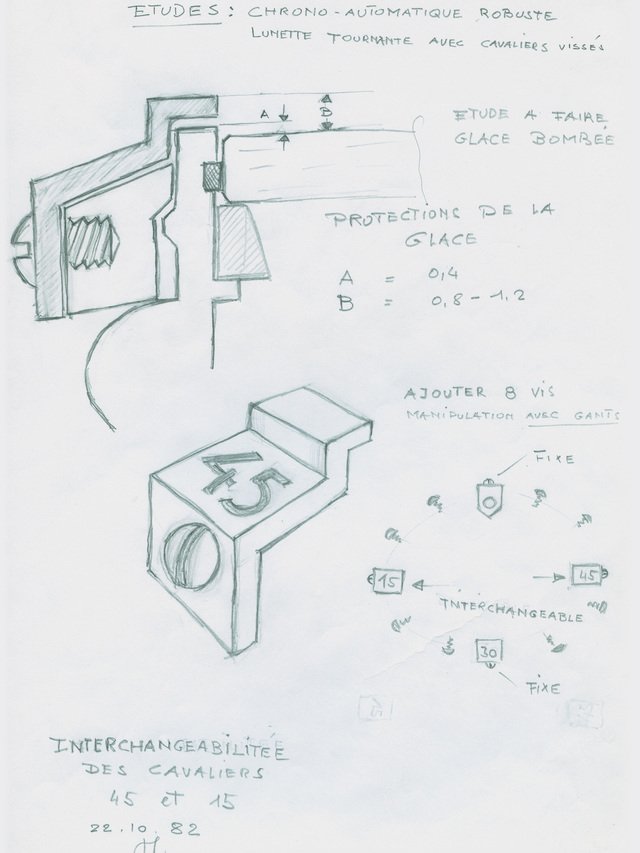
Did you know?
The removable riders on the bezel were made to protect the glass from impact when pilots opened the canopy of their aircraft.
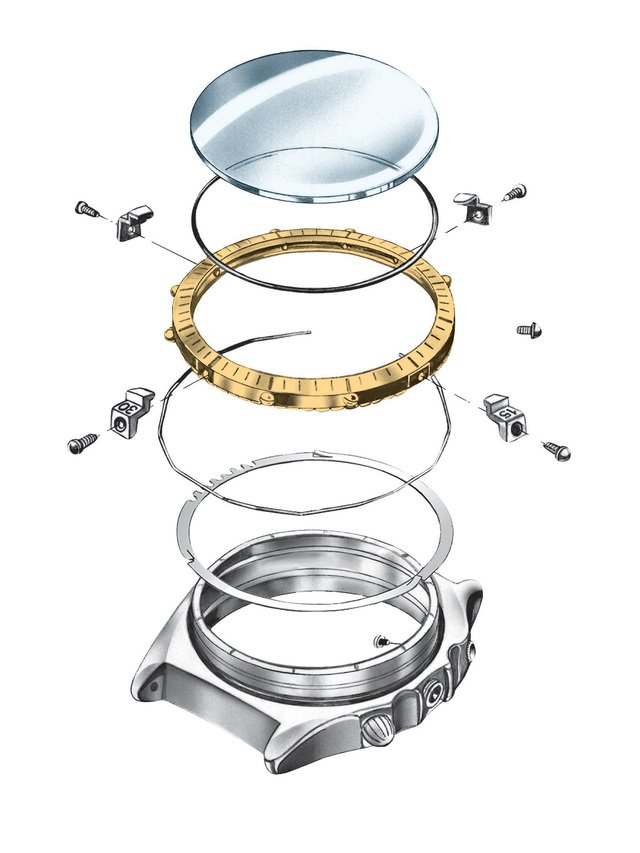
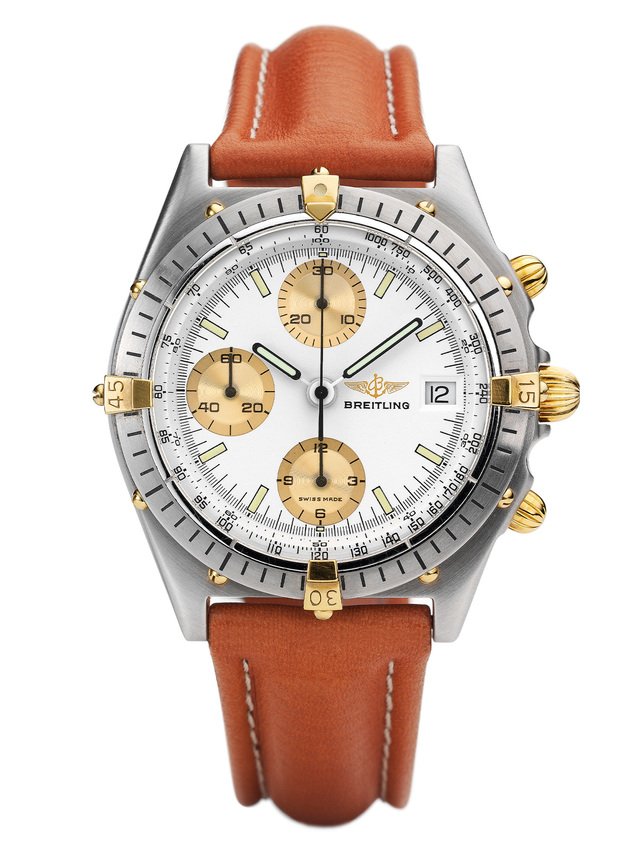

CHRONOMAT
Released in 1984, the Chronomat kept the design elements that made the chronograph “Frecce Tricolori” a faithful companion of the Italian jet pilot squad a year earlier. These included the signature rider tabs, a smooth and streamlined case and the iconic “Rouleaux” bracelet. The interchangeable tabs at 15 and 45 minutes were perfectly suited to either flight (count-ups) or regatta (countdowns) and the inner tachymeter scale made the Chronomat the ideal all-purpose chronograph. The Chronomat also had a yachting version as well as a version specifically designed for the Renault F1 team. Soon, a two-tone version offered rider tabs, a crown and pushers in gold and gave the Chronomat a luxurious flair, making it a symbol of style as well as performance.
The brand’s dual philosophy was to continue Breitling’s mechanical tradition while also taking advantage of the latest electronic improvements to enhance the user’s experience. The introduction of the multifunctional Aerospace chronograph in 1985 was a brilliant illustration of the latter. This completely innovative quartz model, equipped with the latest generation Swiss technology, had a double display – analog and digital – and its dial contained two LCD screens.
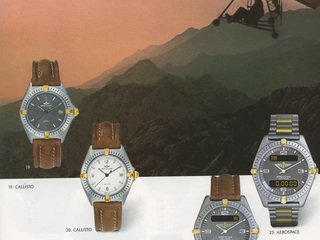
The Aerospace was notable for its simple and logical control system. All of its functions – time display, chronograph, alarm, countdown, dual time zone, calendar and more – were activated simply by turning, pressing, or pulling the crown. This gave the Aerospace an intuitive user friendliness combined with a sleek and understated design.
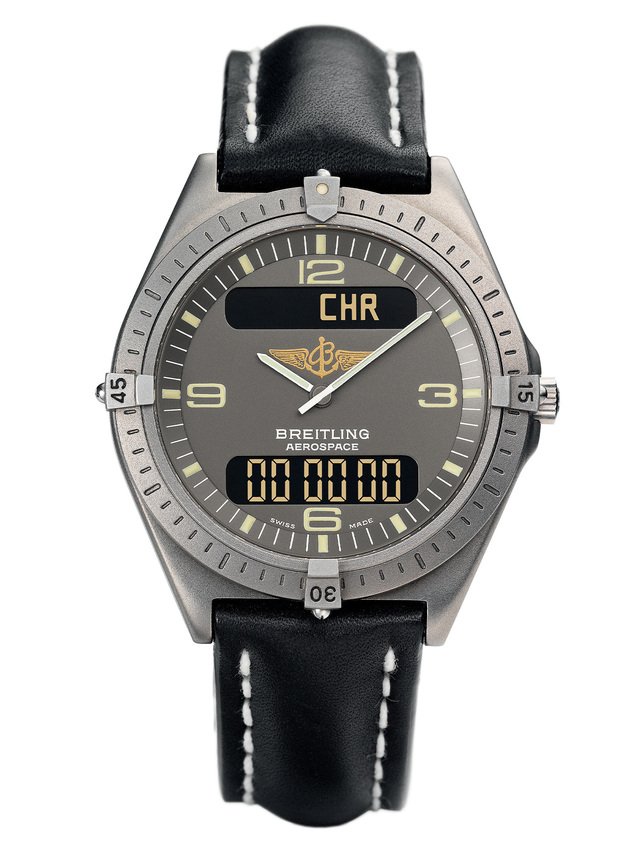

Aerospace
The brand launched the Old Navitimer, a reinterpretation of the original design from 1952. It was equipped with an automatic Valjoux movement. Because of its rich history and elegant design, this piece contributed to the return of the mechanical chronograph.
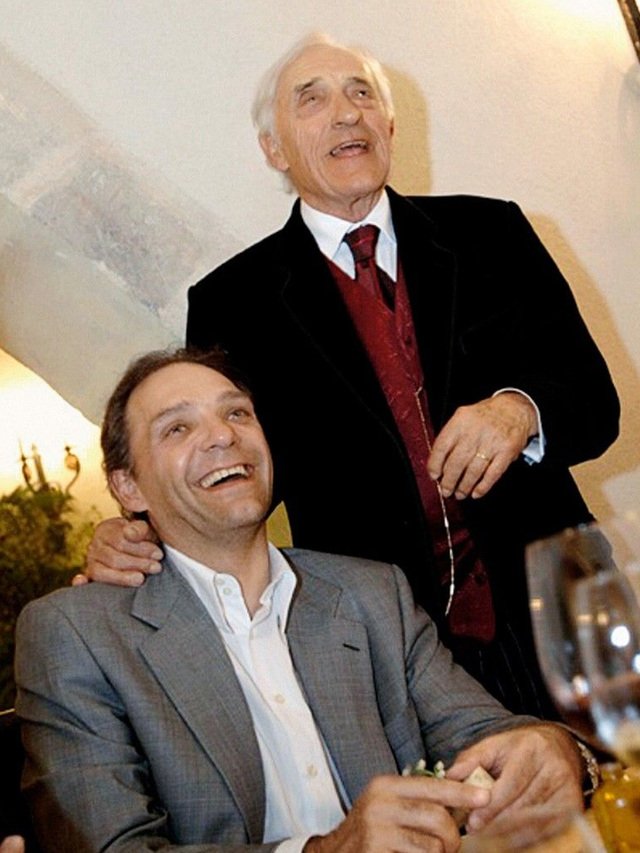
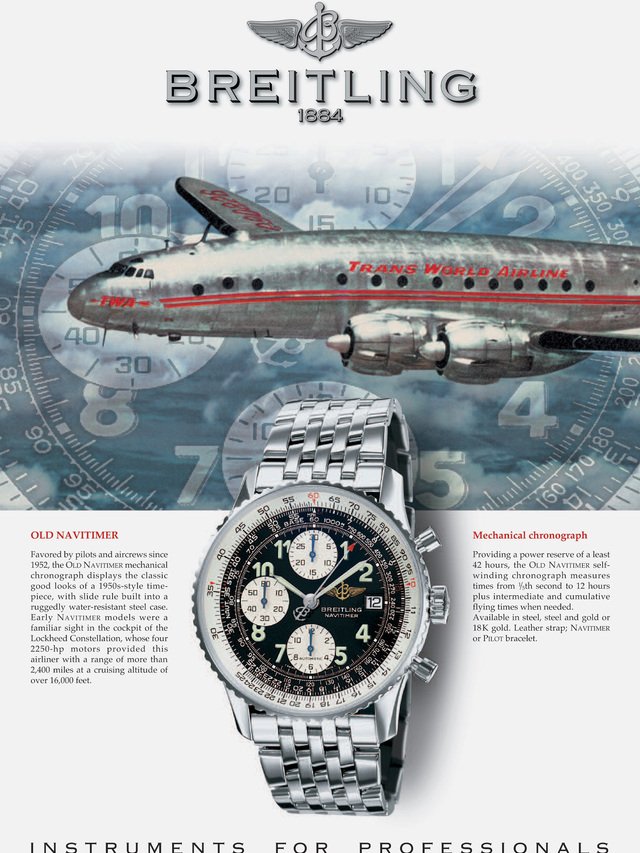
Ernest Schneider officially turned the business over to his son, ushering in a fifth-generation of leadership at Breitling. Théodore Schneider had already been with the company for several years and led a small, not very “hierarchical” team in comparison to other large watch companies of the day. His corporate structure allowed for efficiency, performance and quick decision-making that would prove crucial in the years to come.
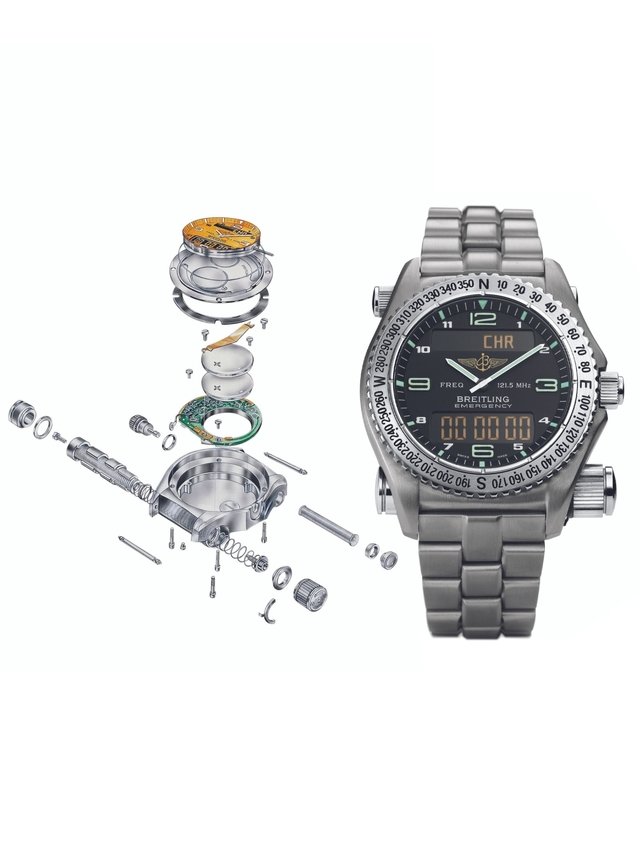
The Emergency was the first wristwatch to be equipped with an integrated emergency transmitter. It was initially launched in 1988 with a single antenna but truly came into its own in 1995 with the introduction of an ingenious patented antenna deployment system. The model’s micro-transmitter, which was locked onto the international air distress frequency, was equipped with two antennas and had a 48-hour independent power reserve. To develop this technology, Breitling worked closely with Dassault Electronique, the specialized division of the famous French aircraft manufacturer.
Did you know?
The idea for the Emergency came up during a conversation between Ernest Schneider and a NATO officer who mused that air and sea crews would benefit from an emergency transmitter that could be worn at all times, like a watch. Soon after, Schneider set to work on that very thing.
Breitling ended the millennium having with an achievement that began in 1992 when aerostat pilot Bertrand Piccard of Switzerland won the Chrysler Transatlantic Challenge with the brand’s support. Encouraged by this success, Piccard embarked on one of aviation’s last great challenges: a nonstop flight around the world in a hot air balloon.
On March 1, 1999, at 08:05 GMT, the Breitling Orbiter 3 balloon lifted off from Château-d’Oex in the Swiss Alps. Aboard were Piccard and Englishman Brian Jones, each wearing an Emergency watch on his wrist. On March 20th, at 09:54 GMT, the Breitling Orbiter 3 crossed its starting meridian in the skies over Mauritania. Breitling’s name had once again made aviation history.
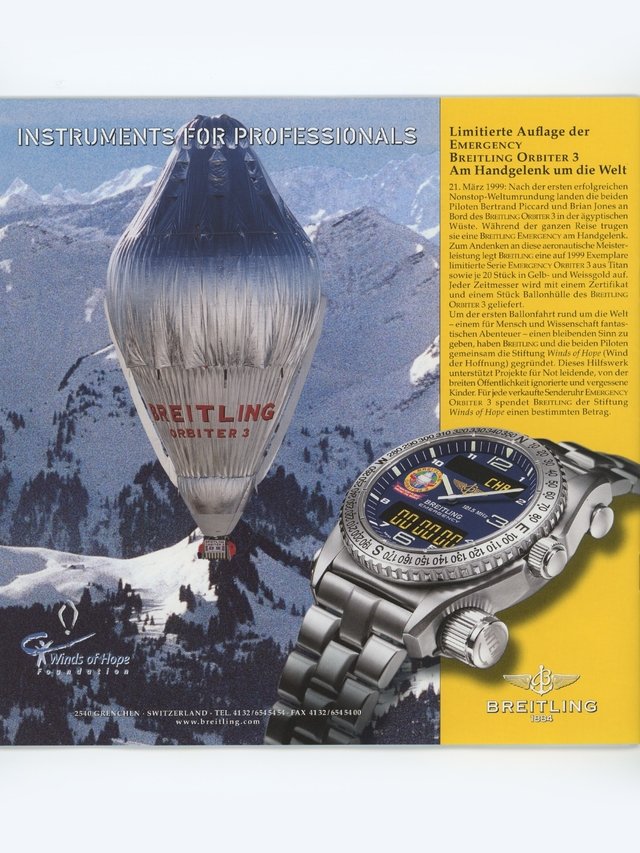
In 1999, Théodore Schneider set a goal for the company: to have all its movements designated as certified chronometers.
At first, the idea seemed unrealistic and utopian. Certified chronometers required extreme precision. The brands that were offering it did so primarily as an added value on specialty pieces. Having all Breitling’s movements certified would mean a rethink of the entire process, from component selection through all stages of assembly to final inspection.
Still, Schneider was not deterred from his 100% certified-chronometer goal. To guarantee total mastery of quality, the company decided to “verticalize” the assembly of its mechanical movements, integrating it all under one roof – Breitling’s.
DID YOU KNOW?
In 2000, the Breitling Orbiter 3’s capsule became part of the Smithsonian National Air and Space Museum in Washington, D.C., the world’s most prestigious aviation museum. The capsule was placed in the Milestones of Flight exhibit containing other honorary machines that conquered the skies such as the Wright brothers’ plane, Lindbergh’s Spirit of St. Louis, Chuck Yeager’s X-1 and the Apollo 11 capsule.
Breitling needed a reliable source of high-performance movements in the quantities demanded and at the level of quality demanded. Schneider decided that the only way to guarantee the source was to be the source. With the opening of the Breitling Chronométrie in La Chaux-de-fonds, the brand became one of only a handful of independent watchmakers to manufacture its own movements.
First Manufacture Caliber
Driven by the desire to remain technologically independent, Breitling introduced its first manufacture movement: the Caliber 01, developed at the Breitling Chronométrie.
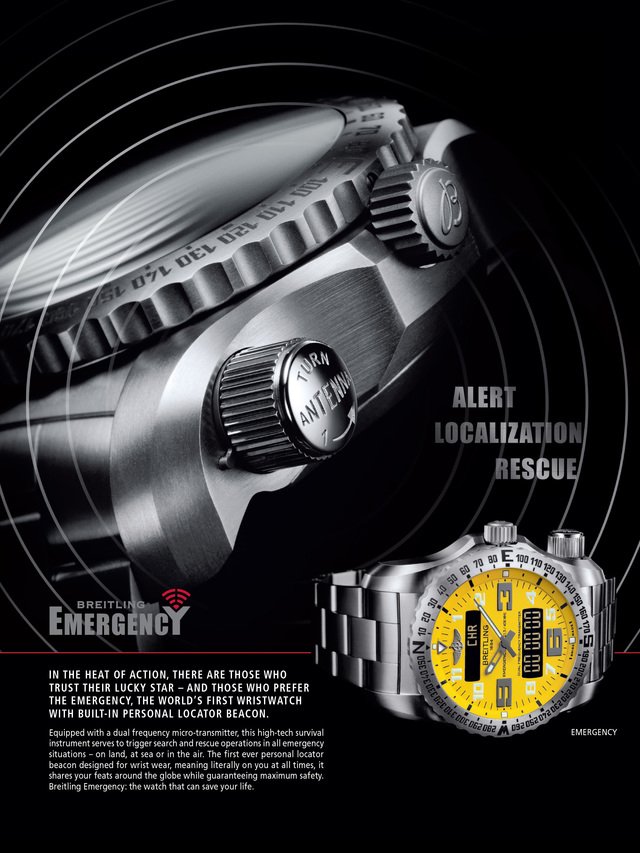
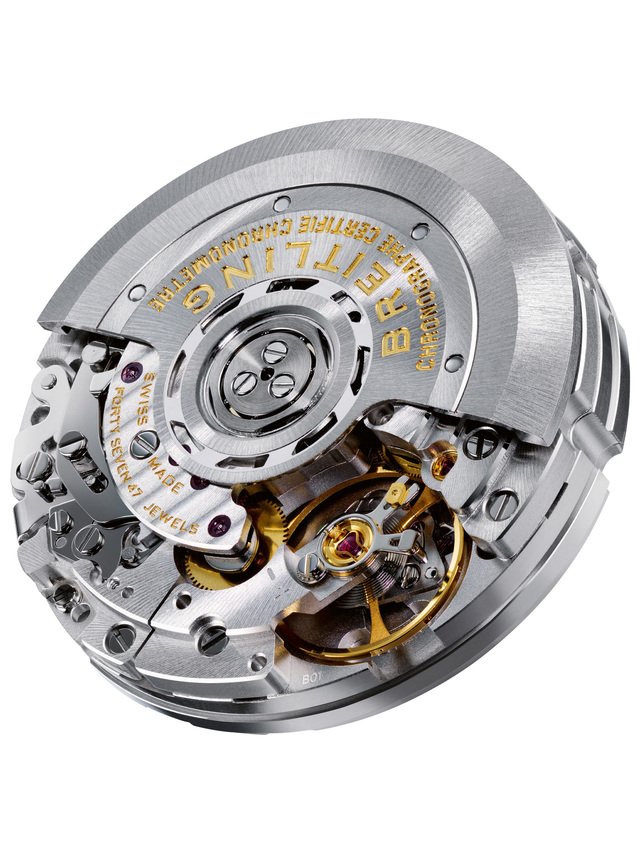
Breitling upgraded the Emergency with the world’s only built-in dual-frequency distress beacon that could be worn on the wrist. The watch was instantly seized upon by authorities as a tool for first responders to coordinate search-and-rescue operations anywhere on the planet.
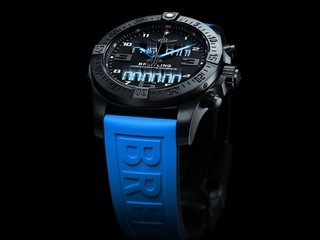
The Exospace B55 combined the appeal of an outstanding wristwatch with smartphone connectivity. Particularly captivating with its black titanium case and rubber strap, it was – in true Breitling tradition – a tool watch that didn’t compromise on style. Watch adjustments, including time-setting, time zones and alarms could be made through the user’s smartphone. Two digital displays notified the wearer of incoming calls, emails, text messages and calendar appointments.
Breitling may have undergone a change in ownership, but its pioneering spirit prevailed. The Schneiders carried on the tradition of innovation set out by Breitling’s founding family and continued to push design and technological boundaries. From emergency beacons to manufacture calibers, a Breitling watch stood for quality, style and performance. But the changes – and breakthroughs – at the company would not end there. Soon Breitling would be sold to a new firm, one whose innovations would lead it into a more connected and sustainable future.
